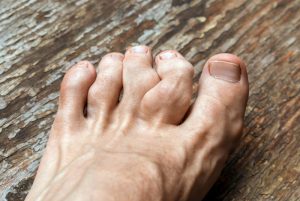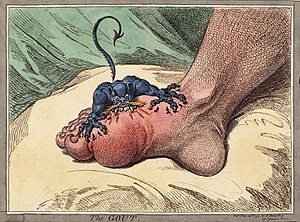
OVERVIEW
Ever felt a reddish and tender pain on your big toe or even both?
If yes, then you should go through this article.
Gout is a type of arthritis that forms as a result of formation of crystals in and around the joint.
It is actually the most common type of inflammatory arthritis. It affects one join at a time (especially the joint at the big toe).
Gout is actually an ancient disease; the Egyptians actually noticed it first.
Gout mostly occurs when there are excess amounts of uric acid deposited in the urine and kidneys.
There is no cure for gout, but it can be managed effectively with the right approaches.
It is most common in the big toe, and is also common in the mid foot, ankle, and knee
WHAT SYMPTOMS SHOULD I LOOK OUT FOR?
Acute gout flare mostly come as a rapid onset of pain at the site of the affected joint followed by warmth, swelling, reddish discoloration, and marked tenderness.
Sometimes most people, the pain is so intense that even if a paper touches it, you feel so much paper.
Symptoms in the affected joint(s) may include:
• Pain, usually intense
• Swelling
• Redness
• Heat
CAUSES
the accumulation of uric acid known usually as hyperuricemia is the cause of gout. When this happens, uric acid crystals are formed then they build up in joints, fluids and tissues.
What increases your chances for gout?
You’re more likely to develop gout If the following is present:
• Being male
• Being obese
• Having certain health conditions, including:
• Congestive heart failure
• Hypertension (high blood pressure)
• Insulin resistance
• Metabolic syndrome
• Diabetes
• Poor kidney function
• Using certain medications, such as diuretics (water pills).
• Drinking alcohol. The risk of gout is greater as alcohol intake goes up.
• Eating or drinking food and drinks high in fructose (a type of sugar).
• Having a diet high in purines, which the body breaks down into uric acid. Purine-rich foods include red meat, organ meat, and some kinds of seafood, such as anchovies, sardines, mussels, scallops, trout, and tuna.
ARE THERE POSSIBLE TRIGGERS?
Sometimes these crystals might not go into your joint cavities, and sometimes they might. Possible reasons why they would include:
• a knock or injury to the joint
• an illness that may make you feverish
• having an operation
• having an unusually large meal, especially a fatty meal
• drinking too much alcohol
• dehydration
• starting urate lowering therapy, especially at a high dose, or not taking your treatment regularly each day.
ARE THERE TREATMENT OPTIONS?
Oh sure!
With self-management and medications, gout can be effectively treated. You can achieve this If you:
1. Manage the pain of a flare: Treatment for flares consists of nonsteroidal anti-inflammatory drugs (NSAIDs) like ibuprofen, steroids, and the anti-inflammatory drug colchicine
2. Get physically active: every minute of activity counts. It is at least better than doing nothing. It is recommended that you do at least 15 minutes of physical activities daily.
3. Eat a healthy diet: foods high in purines are most commonly the triggers for gout flares. Avoiding them could totally help to alleviate pains and soreness in gout. Foods that has high levels of purines includes red meat, seafood like shellfish, limit the intake of alcohol or totally give it up.
4. Protect your joints: low impact types of exercises which won’t lead to joint injuries are preferred. Swimming, bicycling and skipping are actually very good options for exercises.
SOURCES: https://www.webmd.com/arthritis/ss/slideshow-gout
https://www.hss.edu/conditions_gout-risk-factors-diagnosis-treatment.asp
https://www.nhs.uk/conditions/gout/
https://www.versusarthritis.org/about-arthritis/conditions/gout/

